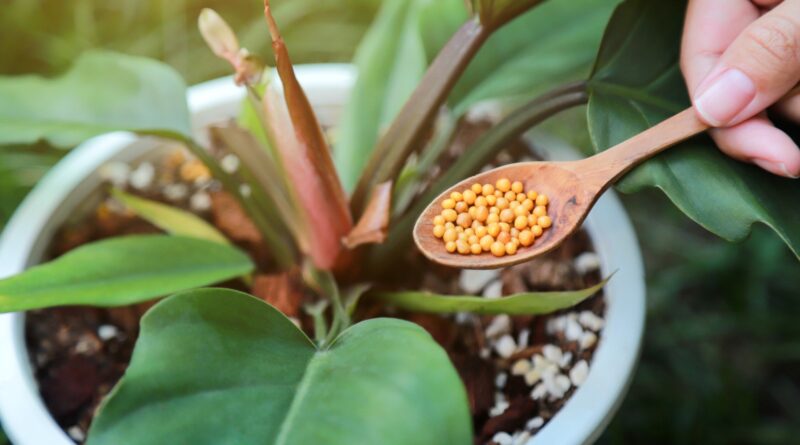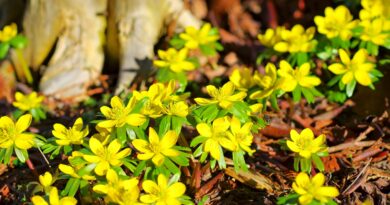Should I Fertilize Houseplants in Winter?
Fertilizing houseplants is important in giving them what they need to thrive. Seasoned houseplant lovers know that establishing a good schedule for feeding your indoor pothos and philodendrons is paramount. You have to know when to fertilize and when to hold off.
In winter, many houseplants go dormant. However, not every houseplant does. That makes the question of whether or not to fertilize a houseplant in winter more complex than it may seem at first. But knowing your plant will tell you everything you need to know.
By understanding your houseplants’ growth habits, you’ll have a good idea of who needs additional nutrients in winter and who should be left alone. Recognizing active growth and dormancy simply by observing your plants is one way to do this. There are other ways as well!
Is Your Plant Actively Growing?
Start here. Plants cannot take up additional moisture and nutrients in dormancy, and fertilizing them now can cause issues down the line. However, if you notice the characteristics of an actively growing plant, you can continue to fertilize.
Signs of Active Growth

Look out for newly developing leaves and flowers to determine whether or not your plant is dormant. Some houseplants, like kalanchoe or Christmas cactus, are still doing their thing even when the day length shortens and temperatures decrease.
Trailing houseplants may continue to develop new leaves, and others may grow flowers. Snake plants are particularly interesting in this regard, as winter is their time to produce a spiked inflorescence.
Dormancy

If you can’t determine whether or not your plant is actively growing, check for signs of dormancy. Slow growth and a lack of newly developing leaves are the main characteristics of a dormant plant. But it can be difficult to tell by looking at your plant if growth has slowed.
Another easy way to tell is browning and dropping leaves. While this can be a sign of disease or pest infestation, it’s also part of the natural cycle of many plants. Unless they are evergreen, they may lose some leaves in colder seasons with shorter day lengths.
Check the soil to see if your plant is dormant. Dormancy prompts less energy output and less need for moisture and nutrients. After you water, if you notice the soil remains moist for quite a while, you are likely dealing with a dormant plant.
When to Fertilize in Winter
Now that you know how to look for signs of active growth, you can determine a schedule that works for you and your houseplants. Here are some guidelines for fertilizing plants in winter.
Is Fertilizer Good for Dormant Plants?

Dormant plants do not use as much energy to grow and, therefore, don’t take up as much water and plant food. Feeding them when they’re dormant can lead to problems, like fertilizer burn or the fungus that causes root rot.
In this case, the water and nutrients become food for pathogens rather than the plant. Avoid overwatering and providing additional nutrients to houseplants in winter when they can’t take them in. Let the soil dry out completely before you add more water, and wait for spring to fertilize again.
Actively Growing Plants

If your plant shows the signs of active growth we discussed in the previous section, you can still fertilize. The outdoor environment may have changed your house’s environment in winter, though. That makes fertilizing less necessary, even though your plants are still growing.
Follow the instructions on the label of the fertilizer you choose. Reducing the regular dosage to half or quarter strength by diluting in water is a good way to ensure you don’t over-fertilize.
Supporting Dormant Houseplants in Winter
Dormant plants don’t need fertilizer and extra water during winter, but that doesn’t mean they don’t need care and attention. Instead of feeding them, focus on keeping them healthy while they sleep winter away.
Watering and Lighting

Just as your plants don’t need extra nutrients, they need less water. Monitor the soil and ensure the proper moisture is present. The same rules apply, but your plant will absorb water much more slowly than it would in an active growth stage.
When it comes to lighting, you may find that as the sun lowers in the winter horizon, you need to supplement to provide the same amount of light as you did before. Grow lights will help you in this regard, as will repositioning your plant to be closer to the rays of sunlight coming through a window. Remove that light-diffusing curtain, and adjust as needed.
Prune Away Damaged and Dead Leaves

Maintenance doesn’t stop when your plant goes dormant. Even evergreen plants may lose a leaf here and there in winter. Remove these as they appear so the little energy your plant expends to live goes toward living tissue rather than dead leaves.
If there is any damage to your leaves as you move them to a brighter light source or as you move them indoors, prune those away as well. A good pair of pruners or snips will do the trick. Sterilize them before each use to prevent the transfer of disease.
Keep Leaves Dust-Free

As your houseplants sleep the winter away, keep them well-dusted to avoid attracting mites that love dust. This also keeps their leaves free of matter that will block their leaves from absorbing light and humidity.
Give your plants all the photosynthetic power they can get by dusting them regularly with a damp or dry cloth.
Provide Humidity

Not every houseplant needs supplemental humidity, but some benefit from a humidifier or nearby water source. Even though your plants won’t take in as much moisture, the humidity will continue to help those who need it.
A small fountain or pebble tray situated amidst your indoor garden is not just great for plants that need humidity. It’s also highly relaxing for you.
Monitor for Pests and Diseases

Always monitor for pests and diseases, regardless of your plant’s condition. You can still treat pests and diseases in dormancy. In fact, your plant will have less ability to fight them off than it would in active growth. Dormancy requires energy conservation, after all.
You can also use insecticidal soaps or neem oil as a preventative on plants that aren’t sensitive to these treatments.
Final Thoughts
You may find yourself fertilizing houseplants in winter, but it’s best to hold off if your plant is dormant. Look for signs of dormancy or active growth to determine which course of action is best. Above all, do not forget that dormant plants need maintenance too!
Give them love and care, and you’ll enjoy thriving indoor plants year-round.




